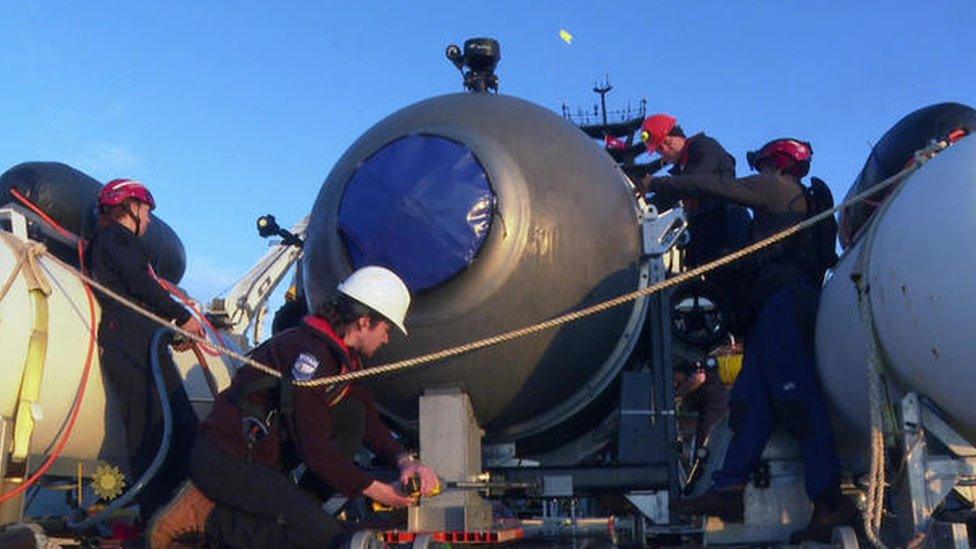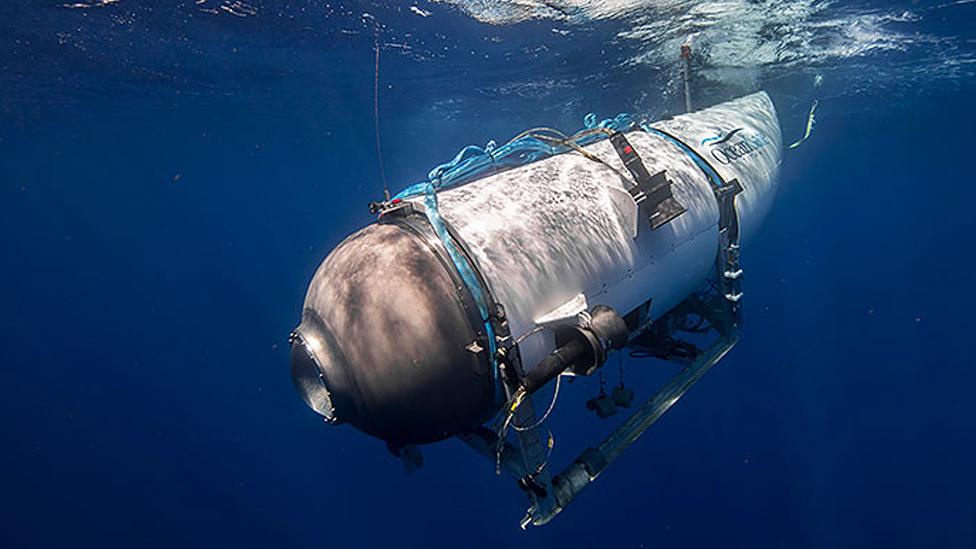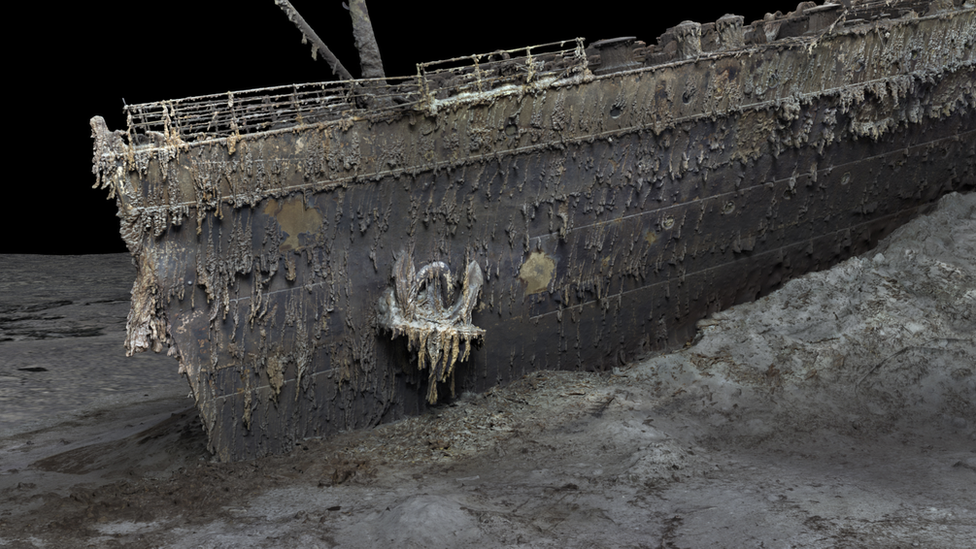Titanic tourist submersible: What's it like on the Titan?
- Published
Watch: Titanic tourist sub is "rock solid"
Two men who made the same trip in a tourist submersible that has now gone missing during a Titanic wreck dive have shared their fears over whether those stuck inside can escape.
The craft went missing in the Atlantic Ocean on Sunday, prompting a major search and rescue operation.
A journalist who travelled last year aboard the submersible said it would be impossible to escape without help.
And it would be challenging for rescuers to find it in time, he said.
CBS correspondent David Pogue - who took the trip last year and wrote an account of it, external - explained to the BBC that passengers were sealed inside the main capsule by several bolts that were applied from the outside and had to be removed by an external crew.
He told The Context programme that the craft, which is believed to be OceanGate's Titan submersible, had seven different functions to allow it to resurface and that it was "really concerning" none of these had so far worked.
However, Mr Pogue said the vessel's resurfacing capabilities would be irrelevant if the sub became trapped or sprang a leak.
"There's no backup, there's no escape pod," he said. "It's get to the surface or die."
Mike Reiss, a TV comedy writer who worked on The Simpsons and also took the trip last year, said he was "not optimistic"
"I know the logistics of it and I know how vast the ocean is and how very tiny this craft is," he told BBC Breakfast.
"If it's down at the bottom I don't know how anyone is going to be able to access it, much less bring it back up," he added.
Watch: In 2022, the BBC filmed inside the Titanic sub with the company's boss Stockton Rush
Mr Reiss said communication was also lost during all three of his dives, including that to the Titanic.
Rescuers are racing against time to locate the missing sub, which normally carries around four days-worth of oxygen for a crew of five, according to the US Coast Guard.
Government agencies, the US and Canadian navies and commercial deep-sea firms are helping the rescue operation, officials said.
But further complicating the recovery mission is the fact that GPS does not work underwater, nor does radio - meaning there is currently "no way" to communicate with the vessel.
"When the support ship is directly over the sub, they can send short text messages back and forth. Clearly those are no longer getting a response," Mr Pogue said, adding that Titan had got lost for about three hours during the expedition he was on last year.
He described being initially hesitant about going aboard the sub at all because some of the components appeared "off the shelf, sort of improvised".
"You steer this sub with an Xbox game controller, some of the ballast is abandoned construction pipes."
Watch: Mike went to see the Titanic before and says we're all aware of the risks, it's not a lark
Mr Pogue said he had been reassured by Titan's inventor and Stockton Rush, the chief executive of OceanGate, that the carbon-fibre main capsule had been co-designed with Nasa and the University of Washington and was "rock solid".
Mr Reiss said that the Titan is "a beautifully designed craft" but that problems can arise due to the nature of the expedition.
"This is not to say this is a shoddy ship or anything, it's just that this is all new technology and they're learning it as they go along.
"You have to just remember the early days of the space programme or the early days of aviation, where you just make a lot of mistakes on the way to figuring out what you're doing."
Titanic's wreck lies some 435 miles (700km) south of St John's, Newfoundland, though the rescue mission is being run from Boston, Massachusetts.
Among those aboard the submersible is the British billionaire businessman and explorer Hamish Harding, according to his family.
Pakistani businessman Shahzada Dawood and his son, Suleman, were also on board, their family said in a statement.
French explorer Paul-Henry Nargeolet is thought to be on board, according to a Facebook post by Mr Harding before the dive started
Mr Rush, the head of OceanGate is also being widely reported to be on the vessel.

The missing craft is believed to be OceanGate's Titan submersible (pictured)
In a statement on Monday, external, OceanGate said its "entire focus [was] on the crewmembers in the submersible and their families".
The company added that it was "deeply thankful" for the "extensive assistance" it had been given from government agencies and companies involved in deep sea operations.
The Titanic, which was the largest ship of its time, hit an iceberg on its maiden voyage from Southampton to New York in 1912. Of the 2,200 passengers and crew onboard, more than 1,500 died.
Its wreckage has been extensively explored since it was discovered in 1985.
- Published19 June 2023

- Published17 May 2023
